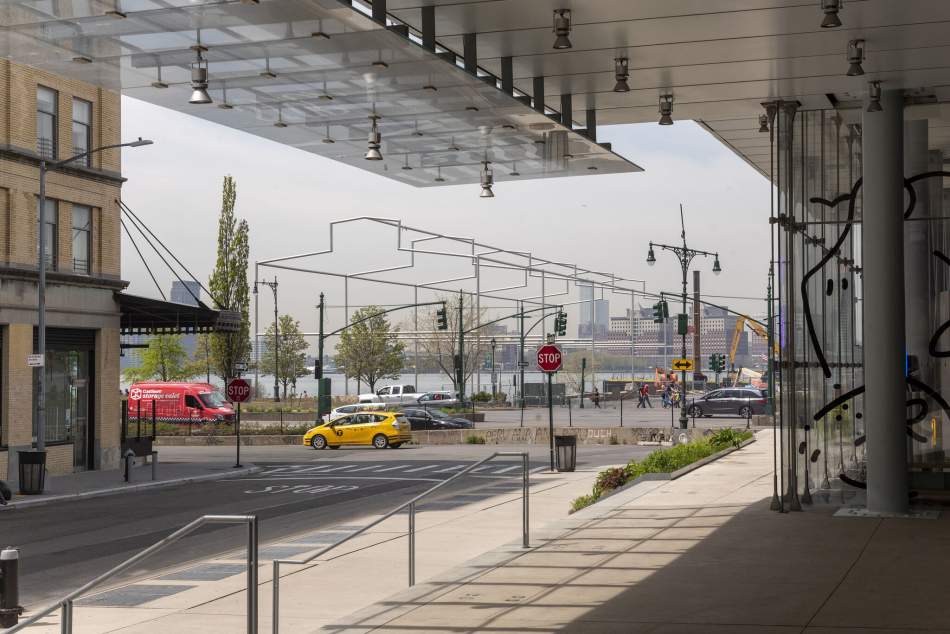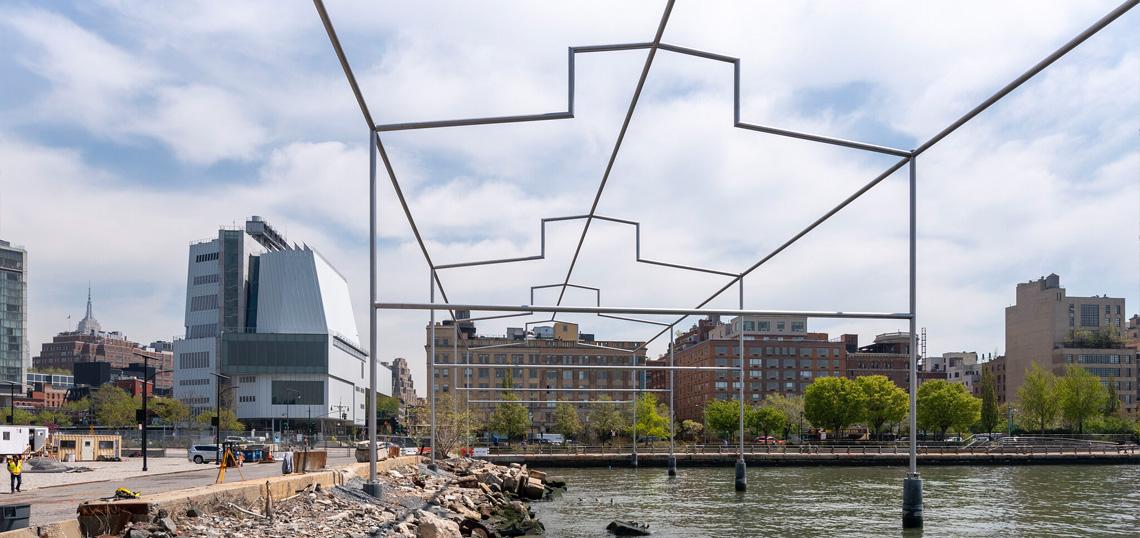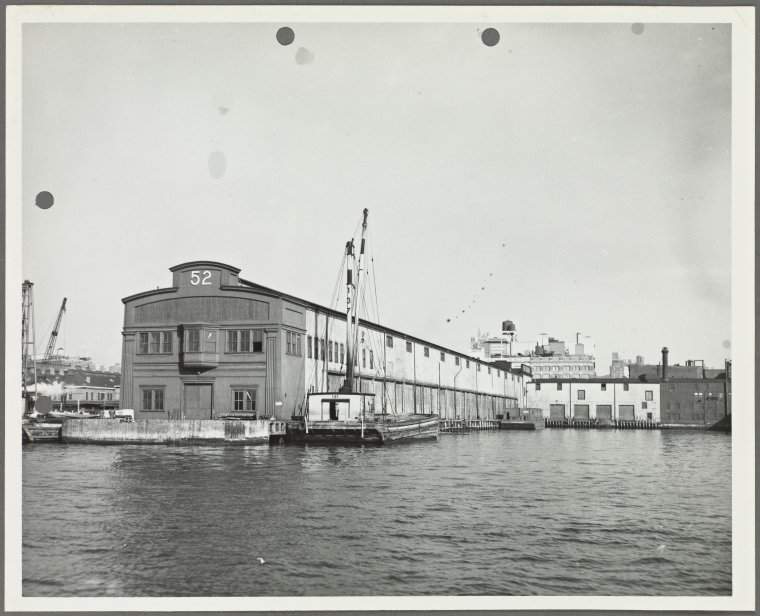Artist and environmental activist Maya Lin’s Ghost Forest opened last week in Madison Square Park. Lin “transplanted” a forest devastated by Hurricane Sandy’s saltwater flooding in the Pine Barrens of New Jersey and installed those dead trees in Madison Square Park. The project’s message is “a memory of germination, vegetation, and abundance and a harsh symbol of the devastation of climate change.” Ghost Forest is Lin’s means to educate and a call to action.
In another ghostly appearance in New York City, artist David Hammons’ Day’s End is a haunting display of ghostly skeletons of the past that can instruct our future.
Across from the Whitney Museum, Hammons has reinvented the southern edge of the abandoned Hudson River Pier 52, an empty remnant of a bygone industrial era. (This area will also soon be the home to the new Gansevoort Peninsula)
Pier 52 has a storied history. Originally, it was a marine transfer station. After it was torn down, it became a truck parking location for the NYC Sanitation Department and then a storage site for salt.
In 1975, two years before the building was demolished, and when Pier 52 was a popular gathering place for the gay community, artist Gorden Matta-Clark created the original “Days End.” Matta-Clark made five large cuts in the building—in the floor, the walls, and the ceiling—and through those cuts, you could see the water below, the sky above, and across the river.
In their informative film, the Whitney Museum director and curator explain how David Hammons came to his version of Day’s End.
Adam D. Weinberg, the Alice Pratt Brown Director of the Whitney Museum, commented, “Gordon takes the existing building and cuts it up and opens it up. David Hammons makes the building disappear.”
“David Hammons’ Day’s End is a paradigm to think differently about what a monument could be,” added Adrienne Edwards, Director of Curatorial Arts. But, beyond that, “It becomes this ghost building of a past, of a different city, of a different time.”
Edwards said that Day’s End, is “a memorial for not just for Gordon Matta-Clark but a memorial to all of the culture: the queen community, the cruising community and the community, in general, that exists unseen and unrecognized and repressed in many different ways but is as inventive and as creative as any other creator in art.”
 © David Hammons. Photograph by Timothy Schenck
© David Hammons. Photograph by Timothy Schenck
While the city is deep in its most recent reincarnation post-COVID, these skeletal exhibits inspired by the past are powerful and effective reminders and symbols of where we came from in hopes we choose the right path forward.
- Meatpacking District (Urbanize NYC)







